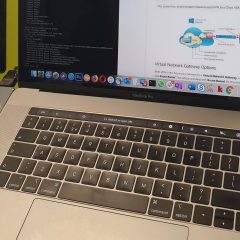SSL_ERROR_UNSUPPORTED_VERSION
SSL_ERROR_UNSUPPORTED_VERSION KB ID 0001856 Problem I get it, older versions of TLS and SSL are insecure and we should not be using them. However I needed to get on an HPE Server iLO management interface last week and I was met with this. Firefox Error: SSL_ERROR_UNSUPPORTED_VERSION Microsoft Edge, Chrome, and Opera Error: ERR_SSL_VERSION_OR_CIPHER_MISMATCH Microsoft Internet Explorer Error: This might be because the site uses...
Fortigate Blank Web Page?
KB ID 0001713 Problem I’ve been trying to deploy a Fortigate into EVE-NG (article to follow) this week. I could get the appliance running fine but when I tried to access the web management console all I got was the following. Note: I have a couple of management VMs in EVE-G (Windows 7 and Server 2012), they had a mixture of IE, Chrome and Firefox on them but still I could not get in? Solution All forums yielded no more info...
Microsoft Edge (macOS) Migrate Bookmarks from Safari
KB ID 0001641 Problem So now theres a version of Microsoft Edge for macOS! Normally I would not bother, but I spend a lot of time in SharePoint and Azure so I thought, rather than my usual approach of playing ‘Browser Roulette’ I’d try Microsoft Edge and see what it was like. My usual browser of choice is Safari, but the install wizard defaults to wanting to import bookmarks / favourites* from Chrome. (I do also have...
Chrome Browser – Show Sites SSL / HTTPS Certificate?
KB ID 0001300 Problem I used to use Chrome all the time back in the dark ages before I saw the light and bought a mac. Since then I’ve persevered with Safari and never felt the need to go back. This afternoon someone in the office asked, ‘How do you see site certificates in Chrome?’ Which I thought was a little odd as it’s easy to do in IE, Firefox, and Safari. So I jumped on a remote machine for a look. Sure...
Deploying Applications with VMware ThinApp
KB ID 0000612 Problem ThinApp is an “Odd” VMware product, insofar as it’s got nothing to do with virtual machines or virtual technology. It’s a product that turns applications into “Stand alone” thin applications, that can be sent to a user and ran without the need for that user to have administrative access, or the need to install anything. ThinApp was a product called Thinstall that VMware...





